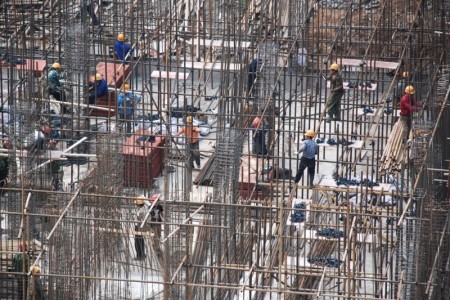By Daniel B. Poneman

In matters relating to climate and energy, cooperation between the United States and China has been advancing in recent years. In many ways, our approaches and interests converge. Both countries have an “all-of-the-above” strategy: the two presidents agreed this week to strengthen cooperation on advanced coal technologies, nuclear energy, shale gas and renewable energy, in their combined effort to build a low-carbon future that will fuel our economies while protecting our environment. And both governments are firmly committed to improving building efficiency as a pivotal element of that strategy, as Presidents Barack Obama and Xi Jinping forcefully underlined in their historic Joint Announcement on Climate Change in Beijing.
It is easy to see why. Worldwide, buildings account for 40 percent of greenhouse gas emissions. In response, the U.S. Department of Energy has embraced a wide array of tools to meet President Obama’s goal to double energy efficiency in the United States by 2030, including through the Better Buildings Challenge, a public-private partnership aiming to cut commercial energy use by 20 percent by 2020.
China alone has 50 billion square meters of buildings and is adding approximately 2 billion more each year, which is about four times the rate at which the United States has been building over the past fifteen years. So if we are going to succeed in bending the curve toward a low-carbon future, improving building efficiency in China represents an unparalleled opportunity.
That is why the Fourth Annual Cities of the Future Conference, co-hosted by Chairman Hank Paulson of the Paulson Institute and Chairman Zeng Peiyan of the China Center for International Economic Exchanges in Beijing this week, focused on increasing building efficiency. During the conference, I had the opportunity to participate in a CEO conversation, to gain valuable U.S. and Chinese perspectives on the role of private enterprise in advancing this critical agenda.
On the panel, Honeywell Chairman and CEO David Cote observed that much of the needed technology to cut energy use in buildings — such as automated demand response — already exists, and emphasized the importance of regulations, price reform, and educating consumers to promote its wider adoption. Hyatt Hotels Corporation President and CEO Mark Hoplamazian described Hyatt’s strategy to reduce waste, build smarter, and inspire customers and suppliers alike to embrace environmental stability. Tunghsu Group Vice President Wang Jianqiang, said low fuel prices make it difficult to build a market for the energy efficient bulbs and window films his company makes, but that energy savings will be a huge trend as China continues to urbanize.
The CEO conversation underlined the potential of the newly-launched CEO Council for Sustainable Urbanization, comprised of 16 leading Chinese and Western CEOs, to play a central role in meeting the ambitious energy efficiency goals that the Chinese and U.S. governments have jointly committed to achieve.
Daniel B. Poneman is a Paulson Institute Distinguished Fellow and former U.S. Deputy Secretary of Energy


